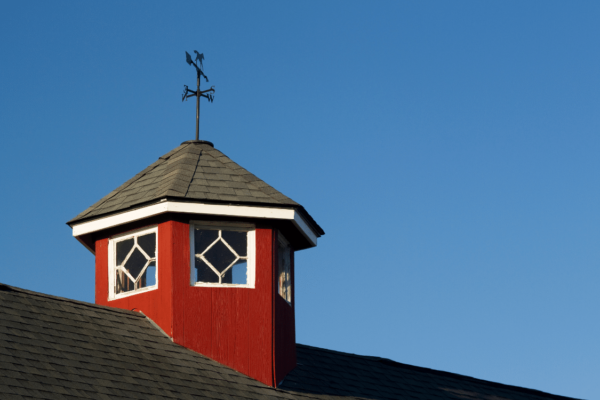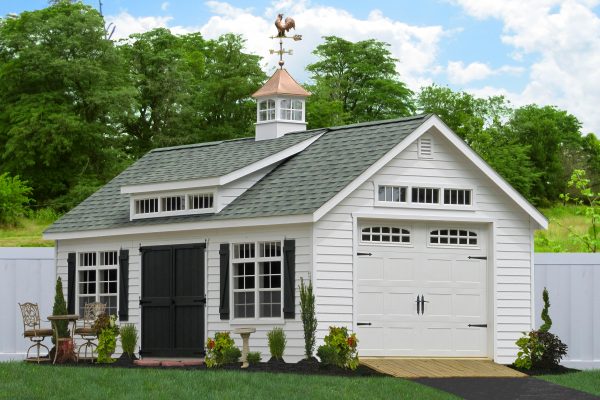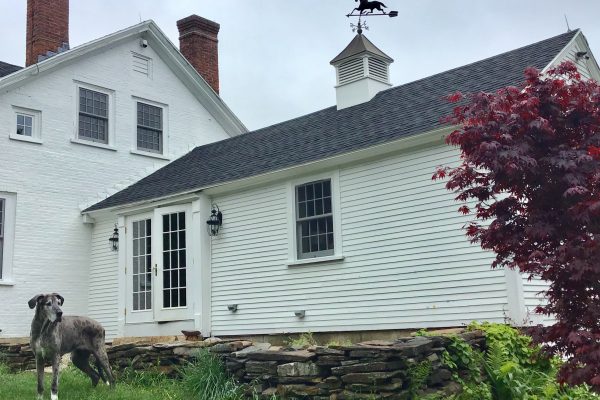What Is A Cupola?
A cupola is a hollow frame that protrudes up from the roof of a building. If that evokes the picture of an upside-down cup, you’d be right on track, as cupola comes from the Latin word “cupula”, which itself means “small cup”. Cupolas often have pointy roofs and windows or vents on the sides.
Cupolas are produced in various shapes and sizes but are commonly square or hexagonal and much smaller than the structure to which they’re attached. Large and extravagant cupolas have appeared throughout the world in some of the world’s greatest buildings and are often dome-shaped and large enough to provide the most distinctive facets of a building.
Cupolas may serve various purposes, but they’re primarily used to add aesthetic appeal to the structure they garnish.
Do Cupolas Provide Practical Uses?
Aside from adding a creative flourish to a building, you may be wondering what the point is of these contraptions and how they came to be in the first place. As with many other facets in architecture, cupolas were primarily functional originally, but they became a feature for adding beauty as their function was replaced with other new inventions. That’s not to say that cupolas aren’t useful, though, let’s explore some of these uses. Keep reading to find out “what is a cupola”?

1. Cupolas For Ventilation
Anytime you shut out the fresh air with four walls and a ceiling, you have a potential problem on your hand if you don’t factor in a solution to provide adequate ventilation. Stale air doesn’t just smell bad, it can be potentially harmful if there isn’t a fresh supply of oxygen to replenish the air that’s being constantly consumed by humans and animals.
The reason that cupolas became such an iconic feature on barns is that they provide such a functional solution for allowing gasses to escape and fresh air into a building while providing adequate protection from the elements. Cupolas are still a useful tool to provide building ventilation. However, modern buildings will likely opt for a ridge vent or some other type of air handling to provide the ventilation needed.
The classic barn cupola is “louvered”, which refers to the slat or blind-like vents that comprise the sides of the structure. These louvers are pointed down to catch the wind that’s forced up the sides of a slanted roof, forcing the fresh air into the hollow center of the cupola.
As long as the roof is removed immediately under the cupola, the air will circulate down through the rest of the building. The angle of the louvers also keeps the rainwater out while allowing fresh air in.
The ventilation function of a cupola was essential for years on the farm scene, as it allowed the stinky fumes from livestock and manure to escape the building without losing too much heat in the process. A Barn Cupola can also provide enough air to allow for hay to naturally dry while being stored in barn lofts and a chicken coop cupola can keep the hens happier and healthier.

2. Cupola Windows Provide Lighting
Not all cupolas provide ventilation—some are made almost exclusively for letting in extra sunlight. These cupolas feature windows instead of louvers and are placed overtop an opening in the underlying roof. Like a sunroof, cupolas are excellent for providing natural lighting near the roof of a structure—up where the sun is shining the brightest!
Many modern cupolas, such as cupolas for sale from our website shop, are also useful for letting extra light into a structure. Just purchase a cupola with windows, cut a square hole in the roof (just smaller than the base of the cupola), cover your hole with screening for extra protection, and then install the cupola overtop.
3. Cupolas as an Observatory
Most cupolas are fairly small and serve ornamental purposes, but some can be quite large. A large cupola that’s enough to hold people inside is typically called a belvedere. The first United States president, George Washington, built one such cupola on top of his home at Mount Vernon, his renowned estate. You can see this beautiful cupola and the view it affords in this official video from Mount Vernon.
Interestingly enough, the United States forest service has built fire towers that use a belvedere-style design on top a metal trellis for keeping watch over the national forests.
What Is A Cupola?: The History
The word cupola is a derivative of the Latin word cupula, which itself is a derivative of the Greek word kupellon, both meaning “small cup”. When architectural designs resembling an upside-down cup were developed, it was only too natural to name them in this way. According to slateandcopper.com, the first cupolas-like designs originated in Islamic architecture in the 8th century. Minarets are towers that were built on or near mosques, useful for announcing the Islamic call to prayer. A protected dome-like structure was added to the top, and these are credited as the earliest forms of cupolas. These early designs served as inspiration for the many dome-like architectural features that would follow.
Explore more of Brunelleschi’s feat in this TED talk.
How Cupolas Challenged Convention and Changed History
One noteworthy story about cupolas relates to the building of the Florence Cathedral in Florence, Italy. Groundbreaking began on this extraordinary structure in 1296, but the original designer, Arnolfo di Cambio, had specified a dome and cupola that was larger than any ever built prior.
One hundred years after construction began, the dome was still not built, and many contemporaries thought it would be impossible. Thus it was that convention was waiting to be challenged, and a brilliant mind was ready to challenge it.
Filippo Brunelleschi, widely regarded as the founding father of Renaissance architecture, finally cracked the code and engineered the construction of this massive ornament from 1446-1461.
During the process, Brunelleschi envisioned entirely new architectural superstructures, and created a slew of new inventions to enable the dome’s construction. The result inspired artists and architects for generations and still stands today as a testament to this renaissance genius.
Cupolas Rise to Power
After the Florence Cathedral feat, these cupola domes became a popular addition to cathedrals, royal estates, and other large structures. One example of this is the large cupola atop St. Peter’s Basilica in Rome.
You can view this large cupola in the following video:
Cupolas have made it to space!
Most people probably think of red barns or Victorian-era houses when they think of cupolas today, so it may surprise you that Cupolas have made it into outer space! The International Space Station has its own cupola for space observation! You may have never thought that asking “what is a cupola” would lead you to outer space!
Immerse yourself in the breathtaking view of the earth that’s afforded by this cupola in the following video:
Products Inspired by Cupolas
As we’ve seen, cupolas have inspired many different innovations, both for their beauty and their function. If you enjoyed the view from space that the ISS cupola affords, you’ll probably be surprised by the opposite extreme—your morning cup of joe.
Apparently, the Italians like their dome-shaped cupolas, because they’ve brought them to the breakfast table with the “La Cupola” mocha pot. Check out this unique looking coffee machine designed by Aldo Rossi for Alessi:

What Is A Cupola Today?
If you’re here asking the question “what is a cupola?”, you probably weren’t expecting a trip to space or a mocha pot, but we hope you’ve enjoyed the journey.
Nowadays, most people who want a Cupola are interested in a house cupola, shed, barn, gazebo, pole barn cupola, or pavilion with one of these ornamental tops.
Cupolas like we sell here at Cupolas ‘n More come in a variety of shapes, including square, round, octagonal, and domed, and really spice up the look of whatever structure to which they’re added.
For an extra punch, many homeowners choose to add a weathervane to the top of the cupola they purchase, which we have available in a large number of designs. We’d love to help you get a cupola that will make your building more interesting and beautiful both now and for the coming generations. Hopefully, we’ve answered your desire to learn what is a cupola? Browse our online collection of weathervanes and cupolas for sale, or contact us to learn more.
See More Cupolas See More Weathervanes